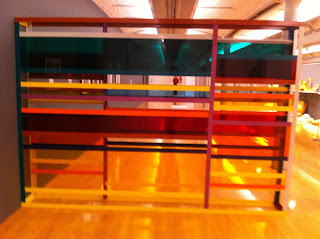Here I have collated some of the key inspirations and ideas that have lead to my final design visualisation. Showing colour ideas, fabric samples before being dyed or printed, artists/designer inspirations, layers of drawings that lead to the idea of layers of fabric, hanging samples, and also some close ups of the marks on the samples. This context sheet sums up the visual inspirations for my project.
One Strong Image - to try and portray the different layers and textures to the fabric. Details are not crystal clear here, but are still visible, and I think it’s more important to get a feel for the piece as a whole than for individual aspects of one sample.
















































